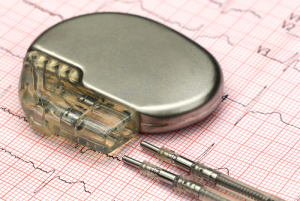by
Lauren Dubinsky, Senior Reporter | November 07, 2017

Partly due to the rise in
cardiovascular diseases
The global cardiac pacemaker market is expected to almost double in a seven-year time frame, according to a Stratistics MRC report.
In 2016 the market was worth $8.01 billion and it’s projected to grow at a 9.3 percent annualized rate and reach $14.99 billion by 2023.
The increasing prevalence of cardiovascular diseases is largely responsible for this growth. According to the World Health Organization, 17.7 million people die each year from CVDs, which accounts for nearly a third of deaths globally.




Ad Statistics
Times Displayed: 37323
Times Visited: 1013 Stay up to date with the latest training to fix, troubleshoot, and maintain your critical care devices. GE HealthCare offers multiple training formats to empower teams and expand knowledge, saving you time and money
More pacemakers are being sold, due to improvements made to their material and software. The newer devices are leadless, antenna-free and contain fewer ferromagnetic components, which makes them MR-conditional.
Miniaturized leadless pacemakers that are implanted directly into the heart have also been introduced to the market. The FDA approved the world’s smallest pacemaker in February 2016 — Medtronic’s Micra.
Biological pacemakers that include cardiac cells or cardiac-like cells extracted from embryonic stem cells or mesenchymal stem cells are being studied. Cedars-Sinai Heart Institute was awarded $3 million earlier this year to develop a biological pacemaker.
More recently, wireless endocardial pacing is adding another layer of complexity to the perioperative management of cardiovascular implantable electronic devices. However, this technology is still under investigation.
Some of the major vendors in the market are Abbott Laboratories Inc., BIOTRONIK SE & Co. KG, Boston Scientific Corporation, Cook Medical, Cordis Inc., Lepu Medical Technology Co. Ltd., LivaNova Plc., Medico, S.p.A, Medtronic, Osypka Medical GmbH, Pacetronix Ltd., SORIN Group, St. Jude Medical Inc., USCOME Ltd., Vitatron and Zoll Medical Corporation.
Other factors that are contributing to market growth are minimally-invasive procedures and government-aided awareness programs. However, the high cost of treatment and rise in product recalls will slow growth.
North America will dominate the market during the forecast period due to the higher incidences of hypertension, high cholesterol and diabetes in the region. Asia-Pacific is anticipated to be the fastest growing region because of the economic reforms China introduced that promote a well-balanced and open economy.

